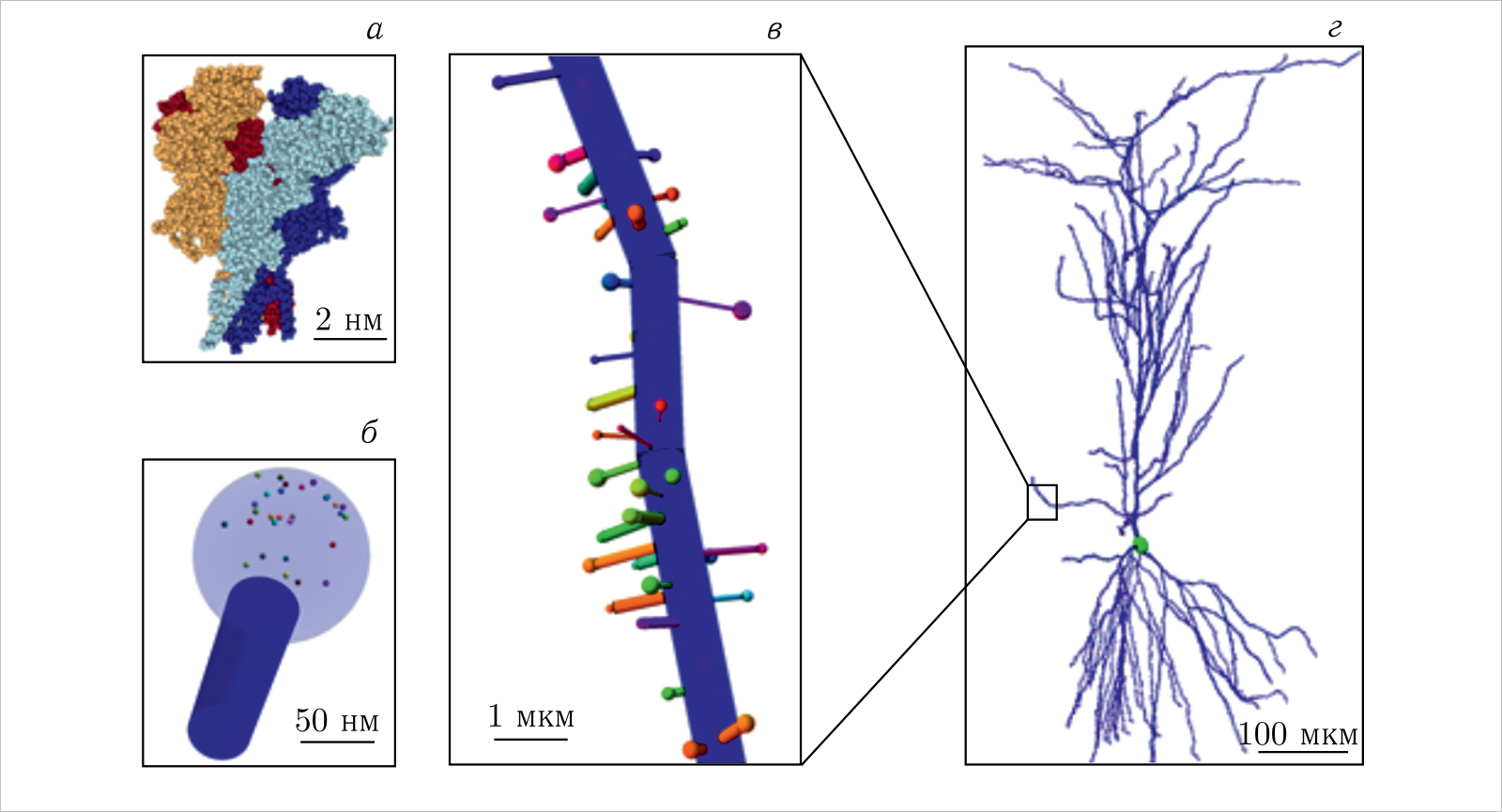On modelling heavy charged particles’ effect on brain
News, 11 February 2025
The JINR Publishing Department issued a preprint entitled “Mathematical modelling of radiation-induced effects in central nervous system structures following exposure to heavy accelerated charged particles” P11-2024-49. The authors are Batmunkh Munkhbaatar, Bayarchimeg Lkhagvaa, and Aleksаnder Bugay, employees of the Laboratory of Radiation Biology at JINR. The data obtained can be used to further assess radiation risks during interplanetary missions and analyse hadron therapy side effects.
 Modelling scheme for random distribution of structural elements in neuron dendrites: (a) the model of NMDA glutamate receptor is represented by atoms with van der Waals radii in four subunits (shown in different colours); b) a model of a dendritic spine consisting of two compartments of a neuron dendrite (shown in different colours); b) a model of a dendritic spine consisting of two compartments of the head (with receptors) and neck; c) a segment of a dendritic branch with spines that are located randomly on dendrites; d) in silico model of a single neuron: the cell body (green) and dendrites (dark blue) with spines and synaptic receptors distributed on them are modelled
Modelling scheme for random distribution of structural elements in neuron dendrites: (a) the model of NMDA glutamate receptor is represented by atoms with van der Waals radii in four subunits (shown in different colours); b) a model of a dendritic spine consisting of two compartments of a neuron dendrite (shown in different colours); b) a model of a dendritic spine consisting of two compartments of the head (with receptors) and neck; c) a segment of a dendritic branch with spines that are located randomly on dendrites; d) in silico model of a single neuron: the cell body (green) and dendrites (dark blue) with spines and synaptic receptors distributed on them are modelled
The article presents theoretical research of the basic mechanisms of how accelerated heavy charged particles affect the central nervous system structures, taking their complex geometry into account. Analysis was conducted on the spatial distribution patterns of absorbed dose and the probability of particle hits in various parts of a cell (body, axon, dendrites, spines) following exposure to charged particles, from protons to iron ions with energy ranging from 10 to 1000 MeV/nucleon.
The scientists studied the mechanisms of the formation of both direct and indirect molecular damage in the genetic apparatus and synapses of neurons caused by physical processes that lead to bond breakage and chemical reactions with water radiolysis products.
In addition, the key modelling parameters necessary for verifying the calculations against experimental results are discussed.
The research was conducted at the Laboratory of Radiation Biology at JINR.